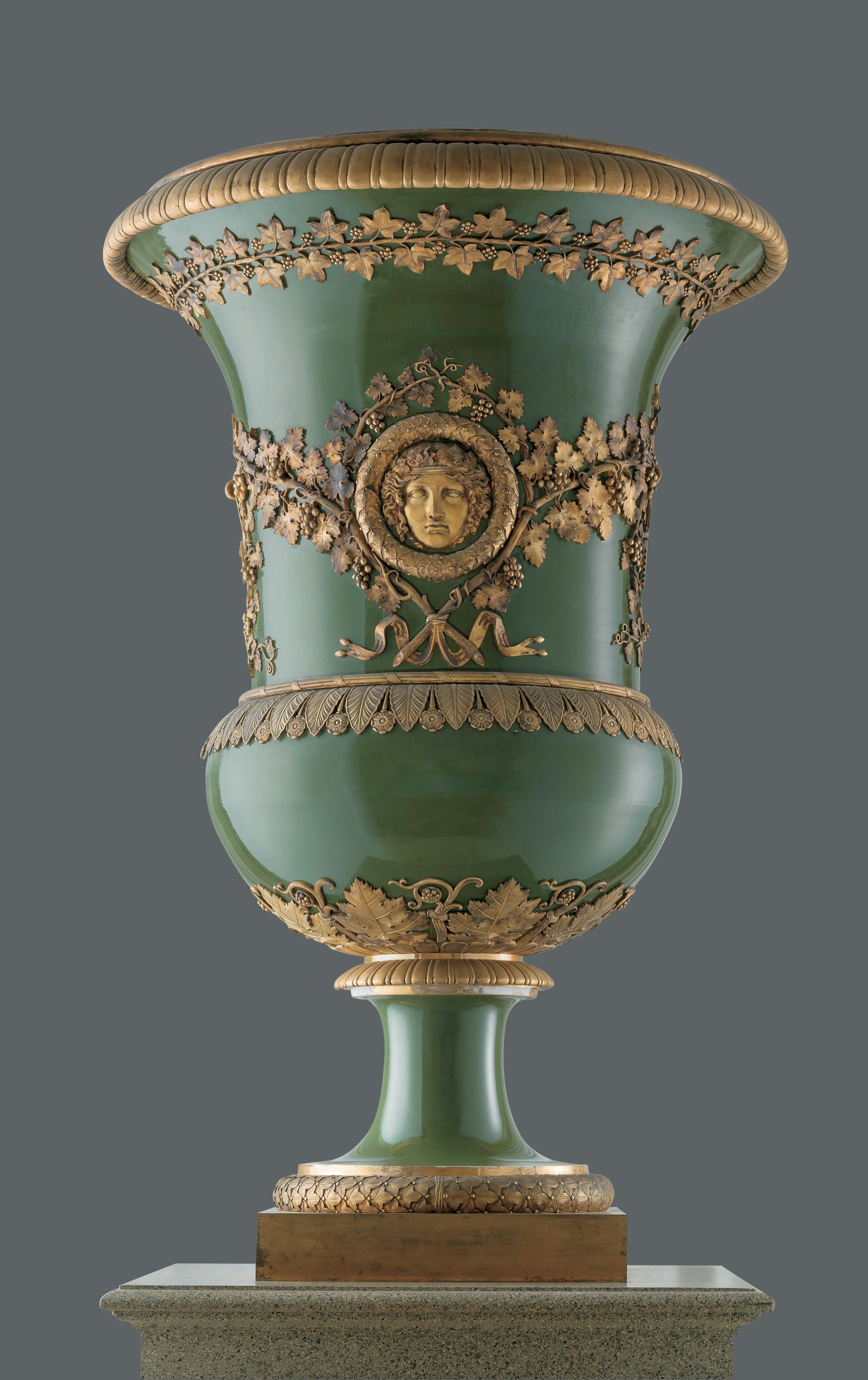Monumental vase
Sèvres Factory
“Monte par Thomire” on the base
The shape of this vase is inspired by the ancient marble called “crater” preserved in the Medici collections, as revealed by the documents of the Sèvres Factory where this type is known as “Medici vase”. In terms of both the silhouette and for the decorative choice in the insertion of gilded bronze reliefs there are similarities with the other larger specimen, exhibited in the Hall of Hercules in the Palatine Gallery (Pitti Art Objects 1911 n. 1518).
The fortune enjoyed by this model continued into the 19th century, albeit with some variations, which we can find in our vase commissioned by Napoleon I, who made it a gift to the Duke of Würzburg, Ferdinand III Habsburg Lorraine, for his role as godfather in 1811 at baptism of the ‘king of Rome’, the son of Napoleon Bonaparte and his second wife Maria Luisa of Habsburg-Lorraine. On that occasion Ferdinand also received from the emperor other porcelains made in Sèvres, including a painted slab and a biscuit bust with the portrait of Bonaparte and another bust, also in biscuit, with the effigy of his wife Maria Luisa Habsburg Lorraine (Pitti Art Objects 1911 nos. 212, 486, 928-929, 1525, 1518 and 1890 n. 8749). These specimens, together with our vase, were brought to the Royal Pitti Palace by Ferdinando III, when, having reacquired the title of Grand Duke of Tuscany, he returned there in 1814.
From a comparison between our product and the production of the French factory in those years, the decorative choice appears rather unusual, not so much for the coating with a uniform background of chrome green, which together with the shades of blue was an identifying shade of the Sèvres production. What is surprising, however, is the high use of applications in gilded bronze depicting garlands of ivy and vine leaves with grape branches that enhance the head of Dionysus placed in the centre and framed by a laurel wreath. In those years the manufacture had developed the technique of miniature, which it had also applied to the representation of floral compositions, as we can find, for example, in the Cordelier vase kept in the Palatine Gallery.
The reasons for this decorative choice are perhaps to be found in the “defective paste”, as defined in the items of expenditure incurred by Sèrves for the creation of the vase. This led to the hypothesis that the surface was compromised to such an extent that it did not allow the development of a pictorial decoration. However, perhaps given the importance of this monumental vase, particular emphasis was given to the author of the bronze reliefs Pierre Thomire, whose name is shown in the inscription at the base.
